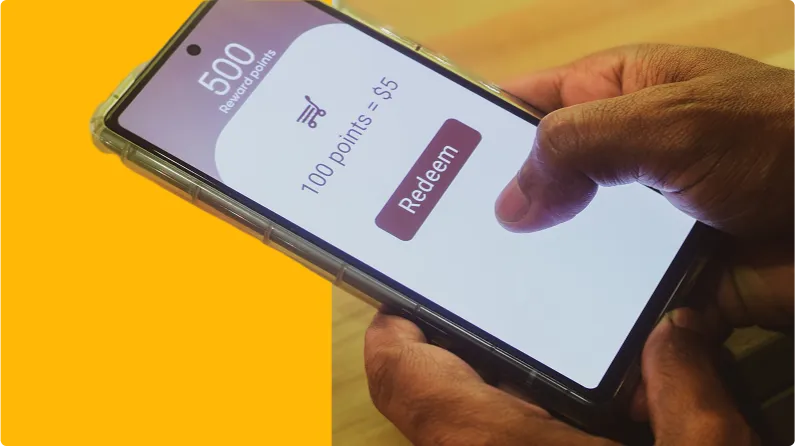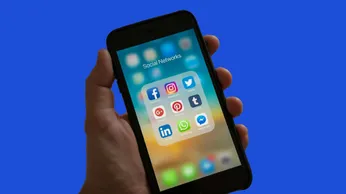On this page
An exceptional product won't cut it in today's fast-paced world of digital commerce, were fleeting attention reigns supreme. Today's customers crave an immersive journey, from initial awareness to loyalty advocacy. Digital rewards offer a powerful tool to achieve this, boosting conversions at every stage of the sales funnel.
A staggering 71% of consumers yearn for personalized experiences, and tailored rewards effectively bridge the gap between initial awareness and brand advocacy. Studies reveal a compelling 10% increase in customer spend within loyalty programs, with millennials, 66% of them would be more likely to shop from stores where they are part of a loyalty program.
The life of a salesperson is far from easy. While the goal remains constant - closing deals and exceeding targets - the obstacles along the way can be diverse and ever-evolving.
Common challenges faced by sales and marketing leaders
The ever-evolving landscape of sales demands constant innovation and collaboration between leadership teams. Both functions play a critical role in the customer journey, and misalignment can lead to wasted resources and missed opportunities.
Here, we'll look into some of the most prominent challenges faced by sales leaders:
1. Prospecting pain points
- Finding qualified leads: Identifying the right individuals within target companies who hold decision-making power can be a time-consuming and frustrating process.
- Cutting through the noise: In an information-saturated world, capturing the attention of prospects amidst the constant barrage of marketing messages is a significant challenge.
- Overcoming gatekeepers: Reaching the right decision-makers often requires navigating through layers of gatekeepers who may not understand your value proposition.
2. Engagement struggles
- Standing out from the competition: Differentiating your offering in a crowded marketplace and convincing prospects why your solution is superior can be difficult.
- Building trust and rapport: Establishing genuine connections with prospects and earning their trust requires strong communication skills and active listening.
3. Closing the deal
- Navigating complex buying journeys: Today's buyers are well-informed and often involve multiple stakeholders in the decision-making process, making the closing stages lengthy and intricate.
- Time pressure and tight budgets: Tight sales cycles and budget constraints can put immense pressure on sales teams to close deals quickly, potentially compromising quality for speed.
4. Post-sale hurdles
- Customer churn and retention: Ensuring long-term customer relationships and preventing churn requires proactive customer service and ongoing value demonstration.
- Cross-selling and upselling: Convincing existing customers to invest in additional products or services requires understanding their evolving needs and offering solutions that provide genuine value.
- Staying informed of customer needs: Keeping up with changing customer preferences and market trends is vital for tailoring your approach and maintaining successful relationships.
How to improve sales conversion rate
In the world of sales, conversion is king. It's the difference between a prospect browsing your website and a happy customer wielding your product.
But with so much competition and ever-evolving marketing landscapes, how do you ensure those browsing visitors actually convert? Here’s how:
1. Know your ideal customer
Focus on quality over quantity. Instead of chasing every lead, identify your Ideal Customer Profile (ICP). This helps tailor your pitch and attract prospects with a genuine need for your product or service. Research their pain points and tailor your message to address them directly.
2. Content that converts
Valuable content is a powerful conversion tool. Create informative blog posts, engaging videos, or downloadable guides that educate your target audience about their challenges and how your product or service solves them.
This establishes you as a thought leader and builds trust with potential buyers. Consider gated content - downloadable resources that require contact information in exchange. This allows you to capture leads and nurture them with personalized communication.
3. Craft compelling CTAs
A clear Call to Action (CTA) tells visitors what to do next. Whether it's "Buy Now," "Schedule a Demo," or "Download our Guide," make your CTAs prominent, easy to understand, and strategically placed on your website or landing pages.
4. Embrace the power of trust
People are more likely to buy from those they trust. Showcase social proof elements like customer testimonials, case studies, and positive reviews to build credibility.
5. Reduce friction in the buying journey
Analyze your sales funnel to identify any roadblocks that might prevent conversions. Is your checkout process too complex? Are website forms lengthy or confusing?
Streamline the buying process by simplifying forms, offering multiple payment options, and providing clear product information.
6. Follow up, consistently
Don't abandon leads after initial contact. Set up automated email sequences to nurture leads with relevant content and offers. For high-value prospects, personalized follow-up calls by sales reps can address specific concerns and nudge them towards a purchase decision.
9 ways to improve sales conversion rates with rewards
Using rewards and gifts as part of your sales strategy can be a powerful way to drive conversions, build customer loyalty, and increase repeat purchases. Here are some effective ways to improve sales conversion rates using incentives:
1. Offer purchase incentives to reduce hesitation
Many customers hesitate to complete their purchase due to pricing concerns or indecisiveness. A well-timed gift or reward can encourage them to finalize the transaction by providing additional perceived value. Offering a gift card, cashback, or freebie can push them to convert faster.
Example: "Buy today and get a $10 gift card for your next purchase!"
2. Reward customers for completing actions that lead to sales
Encouraging customers to take specific actions—like signing up for a demo, consultation, or webinar—can nurture leads and move them closer to a sale. Small but valuable incentives such as digital gift cards or exclusive trial access make participation more enticing.
Example: "Complete a demo call and receive a $25 Amazon gift card!"
3. Personalize rewards based on customer behavior
Tailoring incentives based on customer preferences or purchase history creates a more meaningful shopping experience. Personalized rewards—such as category-specific discounts or loyalty points—make customers feel valued and understood, leading to higher engagement and conversions.
Example: "Since you love fitness gear, enjoy a 10% discount on your next purchase!"
4. Use Referral rewards to bring in high-intent buyers
Word-of-mouth marketing is one of the most effective ways to gain high-quality leads. Offering referral incentives encourages loyal customers to introduce new buyers who already trust their recommendation, boosting conversion rates effortlessly.
Example: "Refer a friend, and you both get a $20 store credit when they make their first purchase!"
5. Convert leads with limited time offers
Creating a sense of urgency with time-sensitive rewards encourages customers to take action quickly. Limited-time discounts, exclusive bundles, or free gifts add urgency to the decision-making process, reducing procrastination and increasing conversions.
Example: "Sign up within the next 24 hours and receive an exclusive welcome gift!"
6. Gamify the buying process
Gamification techniques—such as spin-the-wheel discounts, scratch-and-win rewards, or point-based leaderboards—create an engaging and interactive experience for buyers. This makes the shopping journey more fun and drives impulse purchases.
Example: "Spin the wheel for a chance to win up to 50% off your order!"
7. Reward repeat purchases to increase customer lifetime value
Acquiring new customers is costly, but keeping existing customers engaged is far more profitable. Rewarding repeat purchases with exclusive discounts, bonus points, or freebies can encourage higher spending and long-term loyalty.
Example: "Earn 500 bonus reward points when you place your second order within 30 days!"
8. Use rewards to recover abandoned carts
Cart abandonment is a major hurdle for conversions, often caused by pricing concerns or distractions. Sending a follow-up email with a special incentive—such as a discount, free shipping, or a small gift—can nudge hesitant shoppers back to checkout.
Example: "Still thinking about it? Complete your purchase today and get free shipping + a surprise gift!"
9. Provide exclusive VIP rewards for high-value customers
Loyal customers deserve special treatment. VIP loyalty programs that offer priority support, early access to sales, and surprise gifts create a sense of exclusivity and strengthen emotional connections with your brand, leading to long-term retention.
Example: "Join our VIP program and get priority customer support, early access to sales, and special gifts!"
Examples of companies that have used rewards to increase sales funnel conversion rates
1. Starbucks Rewards: Gamifying loyalty and fueling success
In the world of coffee chains, fierce competition demands constant innovation. Starbucks understood this well, and in 2010, they launched their Starbucks Rewards program, a game-changer in customer loyalty strategies.
By seamlessly integrating gamification elements, personalized offers, and a mobile-first approach, Starbucks incentivized frequent purchases and brand engagement, resulting in impressive growth.
The challenge
- Maintain customer loyalty in a competitive market with rising coffee prices.
- Increase mobile app usage and drive digital transactions.
- Encourage repeat purchases and boost overall transaction volume.
The solution
- Points system: Every purchase earned "Stars," redeemable for rewards like free drinks, food items, and merchandise.
- Tiered system: Three tiers – Green, Gold, and Starbucks Rewards Plus – offered increasing benefits and personalized experiences.
- Challenges and gamification: Seasonal challenges, birthday rewards, and bonus point opportunities added an element of fun and competition.
- Personalized offers: Targeted promotions and birthday rewards fostered a sense of exclusivity and value.
The impact
There has been an average growth of 16% in Starbucks' loyalty program year over year.
Starbucks Rewards went beyond just numbers. It emotionally connected with customers, making them feel valued and part of a larger community. This fostered brand loyalty and organic word-of-mouth marketing, further amplifying the program's impact.
Gamification motivates: Integrating challenges and a points system encourages repeat purchases and engagement.
2. Dropbox: Simple yet strategic referral program
In the early days of cloud storage, Dropbox faced fierce competition with a limited marketing budget. Their solution? A revolutionary referral program that became a case study in simplicity, effectiveness, and sustainable growth.
The challenge
- Attract new users in a crowded market with limited resources.
- Build a user base quickly and organically.
The solution
- Double-sided incentives: Both referrers and referees received free additional storage space, the core value proposition of Dropbox.
- Frictionless experience: Sharing referral links was effortless, integrated into the user interface.
- Transparency and tracking: Users could easily track their referrals and earn rewards.
The impact
- Exponential growth: Dropbox grew from 100,000 users to 4 million in 15 months, a 3900% increase.
- Reduced acquisition costs: Referral program drove users at a fraction of the cost of traditional marketing.
- High engagement: Existing users became brand advocates, promoting Dropbox organically.
- Loyal user base: Referral program fostered positive user sentiment and long-term engagement.
The Dropbox referral program wasn't just about numbers. It created a community of engaged users who felt valued and invested in the platform's success. This fostered a positive brand image and organic word-of-mouth marketing, further accelerating growth.
How Xero supercharged growth with digital rewards
Xero, a leading cloud accounting software, faced challenges acquiring new customers in the UK while offering a positive experience for existing clients. Their traditional model of physical gifts proved costly, inconvenient, and limited choice. Plum's digital reward platform became the solution, propelling Xero to 20% year-on-year growth through strategic incentives.
Challenges
- Needing a scalable and cost-effective customer acquisition strategy.
- Offering limited reward options with physical gifts.
- Providing an inconvenient and time-consuming gifting experience.
- Inability to measure the ROI of physical gifting campaigns.
Solution
Xero implemented Plum's reward platform, offering:
- Link-based referral rewards: Customers received a £50 digital reward for successful referrals, generating a pipeline of 1,900 new customers in 4 months.
- Diverse reward portfolio: Customers could choose from 1 mn+ rewards across various brands, fostering delight and satisfaction.
- Instant gratification: Digital rewards eliminated wait times and offered immediate satisfaction.
- Cost-effective solution: Plum's pay-per-redemption model minimized upfront costs and maximized budget efficiency.
- Seamless integration: The platform integrated with Xero's existing systems for effortless reward management.
Results
- 20% year-on-year growth: Plum's incentives fueled significant customer acquisition and business expansion.
- 25% increased conversion rate: Rewarding referrals enhanced lead conversion and sales success.
- Reduced customer acquisition cost (CAC): Digital rewards offered a cost-effective way to attract new customers.
- Improved customer experience: Choice, convenience, and instant gratification led to happier customers.
- Measurable ROI: Plum's platform provided data-driven insights into campaign performance.
Unlock sales success with strategic rewards
Lead generation is just the beginning—building lasting customer relationships and fostering loyalty is the real game-changer. In today's competitive landscape, digital rewards and personalized eGifts provide a powerful way to engage, convert, and retain customers at every stage of the sales funnel.
Plum offers tailored rewards designed to enhance every touchpoint in the customer journey:
- Lead magnets – Capture high-quality leads with enticing incentives like e-gift cards, exclusive content, or access to premium webinars.
- Demo incentives – Encourage participation in product demos with personalized gifts, special discounts, or extended free trials.
- Referral programs – Turn customers into advocates by rewarding them with referral bonuses, loyalty points, or exclusive experiences.
- Customer loyalty programs – Drive repeat purchases with tiered rewards, VIP perks, and early access to new products.
- Gamified experiences – Boost engagement with contests, challenges, and leaderboards, offering exciting incentives like points, badges, or exclusive experiences.
Plum goes beyond one-size-fits-all incentives—its personalized eGifts ensure every reward resonates with the recipient, increasing redemption rates and maximizing impact. Whether you're looking to attract, convert, or retain customers, Plum's intelligent reward solutions help you turn satisfied buyers into loyal brand advocates.
Ready to elevate your sales strategy? Explore the power of digital rewards with Plum. Book a demo today!















